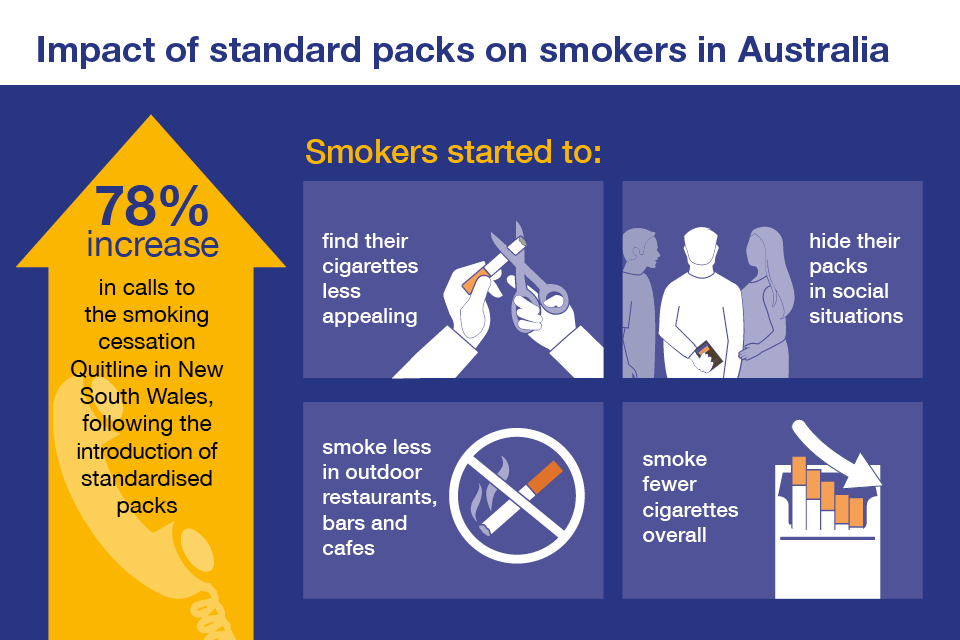Welcome to the latest edition of Health Matters, a resource for public health professionals, which focuses on how tobacco standard packs can not only help to prevent the next generation of smokers but also encourage existing smokers to quit.
Think of the Marlboro brand of cigarettes and you instantly associate it with the rugged manliness of the all American Marlboro cowboy.
Few people realise that Marlboro started off life as a brand aimed at women with the slogan “mild as may” appearing on crisp white boxes. Adverts for Marlboro in the 1930s featured a close-up image of a glamourous woman, with dark lipstick, smoking a bright white cigarette.
By the 1950s, Marlboro repositioned itself with the Marlboro cowboy on its packs to give the brand broader appeal. This was at a time when filters where being added to cigarettes as scientists started to link smoking to lung cancer.
Marlboro was keen to show that smoking a cigarette with a filter wasn’t just something women did.
This exercise in rebranding boosted sales significantly and highlights just how important cigarette branding and packaging is to the success of the product.
We know that tobacco companies invest a lot of time and money into getting the packaging right. After all, they now have fewer and fewer ways to tell people about their brand. In the UK, tobacco companies cannot advertise on television, on billboards, or in printed publications.
Cigarette packs represent the last advertising medium for tobacco companies to sell the ‘personality’ of their brand to consumers.
Evidence shows that children and young people are most vulnerable to tobacco advertising and promotion. Most smokers start as teenagers and two-thirds take it up before the age of 18.
That’s why it is no exaggeration to say that the decision to introduce standardised packaging for tobacco products in the UK is a game changer in helping to prevent future generations from taking up smoking.
The first wave of these drab, unappealing standard packs has already hit the shelves in some cities in England. They will continue to gradually appear and by May 2017 all cigarettes and rolling tobacco will be sold in standard packs.
Real world evidence from Australia - the first country in the world to introduce standard packs – indicates that the measure is having the intended impact in reducing smoking uptake among young people.What took health professionals by surprise in Australia was the secondary impact on existing smokers.
There was a 78% increase in calls to the smoking cessation Quitline in New South Wales following the introduction of standard packs. This peak occurred 4 weeks after the initial appearance of standard packs and the effect has been prolonged.
Research has shown that compared with smokers smoking from branded packs, smokers who were smoking from standard packs were more likely to perceive their tobacco as being lower in quality, tended to be lower in satisfaction, and were more likely to think about and prioritise quitting.
Currently, two out of three adult smokers in England say they want to quit. That proportion is set to increase over the coming months as standard packs come in and local healthcare systems need to be ready to make the most of this opportunity to boost quitting rates in their populations.
The harm of smoking hits hardest in our poorest and most disadvantaged communities. As well as the benefits to millions of individuals, tackling smoking helps make services across the entire health and care system more sustainable.
This edition of Health Matters sets out the evidence on standardised packaging and calls on local authorities and health professionals to play their part in ensuring that all smokers have access to the support they need. Read the standard packs edition of Health Matters for more on what local authorities and health professionals can do to seize the moment to help more smokers to quit.
Download the infographics, slides and video content and use them locally when helping to make the case for stop smoking services.
Health Matters
Health Matters is a resource for professionals which brings together the latest data and evidence, makes the case for effective public health interventions and highlights tools and resources that can facilitate local or national action. Visit the Health Matters area of GOV.UK or sign up to receive the latest updates through our e-bulletin. If you found this blog helpful, please view other Health Matters blogs.


